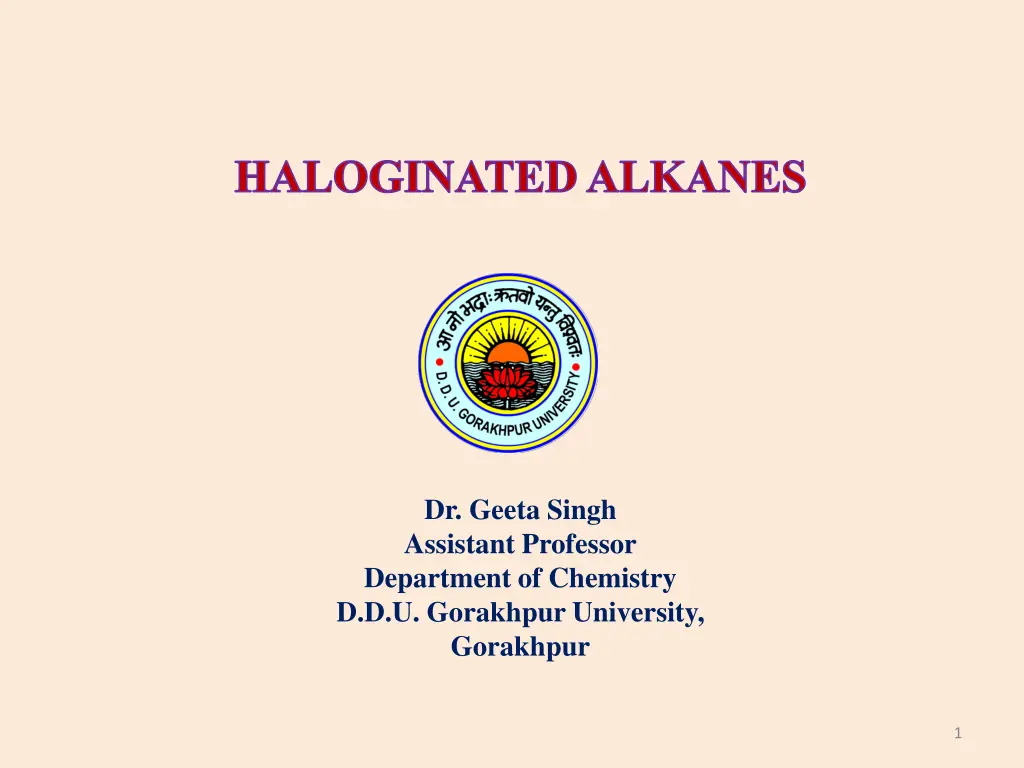
Understanding Halogenated Insecticides and Their Structure-Specific Efficiency
Explore the world of halogenated insecticides, including halogenated alkanes and cyclodiene derivatives, their properties, and the significance of their structural variations. Discover the applications and toxicities of compounds like chlordane and heptachlor in pest control and agriculture.
Download Presentation

Please find below an Image/Link to download the presentation.
The content on the website is provided AS IS for your information and personal use only. It may not be sold, licensed, or shared on other websites without obtaining consent from the author. If you encounter any issues during the download, it is possible that the publisher has removed the file from their server.
You are allowed to download the files provided on this website for personal or commercial use, subject to the condition that they are used lawfully. All files are the property of their respective owners.
The content on the website is provided AS IS for your information and personal use only. It may not be sold, licensed, or shared on other websites without obtaining consent from the author.
E N D
Presentation Transcript
HALOGINATED ALKANES Dr. Geeta Singh Assistant Professor Department of Chemistry D.D.U. Gorakhpur University, Gorakhpur 1
Halogenated Insecticides Organochlorine pesticides (OCP) are synthetic pesticides widely used all over the world. They belong to the group of chlorinated hydrocarbon derivatives, which have vast application in the chemical industry and in agriculture. These compounds are known for their high toxicity, slow degradation and bioaccumulation. The aliphatic or aromatic halogenated compounds which may be used to kill the insects are known as halogenated insecticides. The main types of halogenated insecticides are halogenated alkanes, BHC and its isomers, DDT and important analogs ( DFDT, DMDT, DDD).
Cyclodiene Derivatives Cyclodiene insecticides are comprised of compounds obtained by a Diels-Alder reaction, and were first marketed after World War II. The key synthetic hexachlorocyclopentadiene that chlorination of cyclopentadiene . One of the most important groups of chlorinated hydrocarbon insecticides are formed from Diene group. In the synthesis hexachlorocyclopentadiene is used as 1,3-diene partner and various ring system may be synthesized. intermediate can be is by obtained of diene insecticides
Chlordane Chlordene has only weak insecticidal effect while chlordane which contains two more chlorine atoms, is 300 times greater insecticidal property.
This indicates that the efficiency of insecticides of cyclodiene type is highly structure-specific. A slight modification of molecule greatly affect the efficiency. The steric structure of compounds is also of great importance from the activity viewpoint. -Chlordane (1-exo-2-exo) structure has strong insecticidal effect while its stereoisomer - chlordane (1-exo-2-endo) is considerably weaker.
Application and Properties The technical product contains 60% of -Chlordane and 25- 40% of other chlorinated cyclopentadiene derivatives including heptachlor. Chlordane is a yellow or brown viscous liquid. The technical product is very sensitive to alkali action and the presence of iron compounds may accelerate decomposition. Chlordane is moderately phytotoxic. It is contact insecticide and is used against chewing and sucking insects and soil pests. It has also an acaricidal effect. It is moderately toxic to warm blooded animals. Its acute oral LD50 for rat is 460-590 mg/kg.
Insecticidal property of heptachlor is 4-5 times greater as that of chlordane. The technical compound contains about 67% heptachlor and 33% related compounds including -chlordane. It is sensitive to heat, light, moisture, acids, alkalis and oxidative action. The toxicity of heptachlor to warm blooded animals is about 4-5 times that of chlordane. Its LD50 for rat is 135 mg/kg. It is thus relatively toxic insecticide. 90-
Synthesis The preparation of compound involves two Diels Alder reactions. First bicyclo (2,2,1)-2,5-heptadiene (B) is prepared by the diene synthesis of acetylene and cyclopentadiene and secondly it is then reacted (B) with hexachlorocyclopentadiene (A).
Application and Properties Pure Aldrin is white crystalline compound. The technical product is waxy brown substance containing about 78-95% of aldrin in addition to other products some of which have insecticidal properties. Aldrin is very stable to organic and inorganic acids and bases occurring in the soil. Due to its stability and volatility it can be used as soil insecticide. Aldrin is highly poisonous to warm blooded animals. It is easily absorbed through the skin. Therefore proper care should be taken while handling to avoid contact with exposed surfaces of the body. However contact of this causes, nausea, vomiting, headache, and fainting. Aldrin is converted in the soil, in plant, insect and warm blooded organisms to its Dieldrin.
Dieldrin Dieldrin is a chlorinated hydrocarbon originally produced in 1948 by J. Hyman & Denver, as an insecticide. Dieldrin is closely related to aldrin which reacts further to form dieldrin. Aldrin is not toxic to insects; it is oxidized in the insect to form dieldrin which is the active compound. Dieldrin may be prepared by oxidizing aldrin with peracetic acid or perbenzoic acid. An epoxide group is formed at the site of the double bond not substituted by chlorine atoms.
Application and Properties The technical product has 85% dieldrin. It is not sensitive to alkalies. It is not used as soil insecticide due to its low volatility. Dieldrin is toxic to warm blooded animals. Its LD50 for rat is 50-57 mg/kg. It is easily absorbed by skin causing rapid loss of weight, loss of appetite etc. It is toxic to fish. However, it is an extremely persistent organic pollutant , it does not easily break down. Furthermore it tends to biomagnify as it is passed along the food chain. Long-term exposure has proven toxic to a very wide range of animals including humans, far greater than to the original insect targets. For this reason it is now banned in most of the world.
